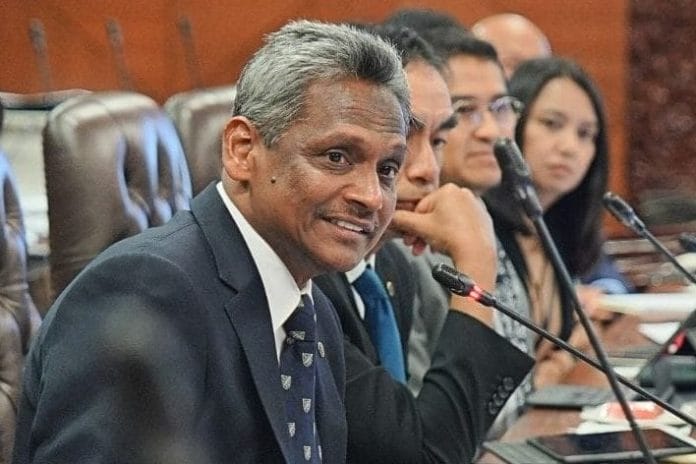Bank Negara Malaysia (BNM) stated it will not be facing a balance of payment crisis after the current-account surplus narrowed sharply to its lowest in 26 years.
BNM Deputy Governor Datuk Marzunisham Omar told reporters following the release of the central bank’s annual report today that the current-account surplus is expected to improve in 2024, mainly driven by growth in the tourism sector and export recovery this year.
“We are not and will not be facing that balance of payment crisis,” Marzunisham said. “In addition to [the] export recovery that we forecast, the tourism sector is a big foreign exchange earner for the country.”
Narrower Current-Account Surplus, A Barrier To Balance Of Payment Crisis
Malaysia has run a current-account surplus for over two decades, which means that the country is earning more foreign exchange from goods and services exported than it is spending on imports, thanks to strong shipments of electrical and electronic products.
The current-account surplus, however, more than halved to RM22.8 billion or 1.2% of gross domestic product (GDP), its lowest since 1997, as both exports and export earnings fell amid sluggish external trade, global technology downcycle and lower commodity prices.
Marzunisham was responding to a question on whether Malaysia will face a balance of payment crisis, much like what Sri Lanka is currently facing.
Sri Lanka defaulted on its external debt in April 2022, igniting a series of economic crises that exposed its long-standing economic and financial vulnerabilities.
A balance of payment crisis, also known as a currency crisis, occurs when a nation is unable to pay for essential imports or service its external debt repayments. This is typically accompanied by a rapid currency depreciation.
BNM Governor Datuk Shaik Abdul Rasheed Abdul Ghaffour said the central bank is projecting the current-account surplus, as a proportion of GDP, to widen to 1.8%-2.8% this year, mainly driven by recovery in global trade and tech cycle, higher commodity prices that would benefit Malaysia as a net exporter, and improving travel receipts.
“The current account of the balance of payments is expected to improve and record a higher surplus in 2024,” he said. “This will be driven mainly by, first, higher goods surplus, and secondly, lower services deficit following continued improvement in inbound tourism.”
E-Payment Transactions Skyrocket To 11.5 Billion last year
BNM stated that the nation’s Electronic payment (e-payment) adoption continued to increase to 11.5 billion transactions in 2023 compared to 9.3 billion in the previous year.
The central bank’s Annual Report 2023 released today (Mar 20) said it is on track to achieve the Financial Sector Blueprint target of more than 15 per cent compounded annual growth of e-payment transactions per capita between 2022 and 2026, on the back of the 20 per cent growth to 343 transactions per capita in 2023 compared to 285 transactions per capita in the previous year.
BNM said: “E-payment growth was supported by consumption activity as the total value of selected retail e-payment transactions grew by 17 per cent to reach RM592 billion, complemented by collective public and private sector efforts to increase e-payment adoption.”
The bank highlighted credit transfer services formed the largest share of e-payment transactions with a 43 per cent share.
DuitNow Transfer continued to be the preferred option, sustaining a high annual growth rate of 32 per cent (2022: 26 per cent) and a 39 per cent market share of credit transfer services, according to the report.
BNM said that the acceptance of e-payment transactions among businesses, especially among small-sized enterprises, continued to gain traction. “In particular, DuitNow QR transactions have seen significant take-up since its introduction, driven by greater familiarity with the DuitNow QR service, popularity with customers due to its convenience and its lower cost for merchants relative to other e-payment alternatives.’
Separately, BNM is exploring possibilities of the Central Bank Digital Currency (CBDC), specifically to improve cross-border payments, while exploratory work on domestic wholesale CBDC is ongoing and is expected to further intensify in 2024.
“As digital assets gain traction, we are also committed to ensuring that the involvement of the Malaysian financial sector in digital asset activities is managed responsibly, with a clear understanding of how such activities can reduce or increase operational and financial risks.
“Although financial institutions have indicated openness to explore the potential of digital asset-related activities and distributed ledger technology (DLT), their current focus remains limited to providing traditional services to digital asset players such as payments, deposit and trust accounts,” the report read.
Moving forward, the central bank noted that it will continue to work to ensure that Malaysia’s payment systems and the money services business (MSB) industry remain safe, efficient and reliable in support of the needs of the economy.
“To this end, we continue to proactively identify and address emerging risks, as well as to support greater use of e-payments, as well as work closely with stakeholders from the public and private sectors to safeguard public confidence and promote responsible innovation.
“BNM also remains dedicated to future-proofing the domestic payment infrastructures in line with aspirations in our blueprint, including intensifying exploratory work on CBDC and asset tokenisation as well as adopting emerging technologies such as DLT in the financial system,” according to the report.









